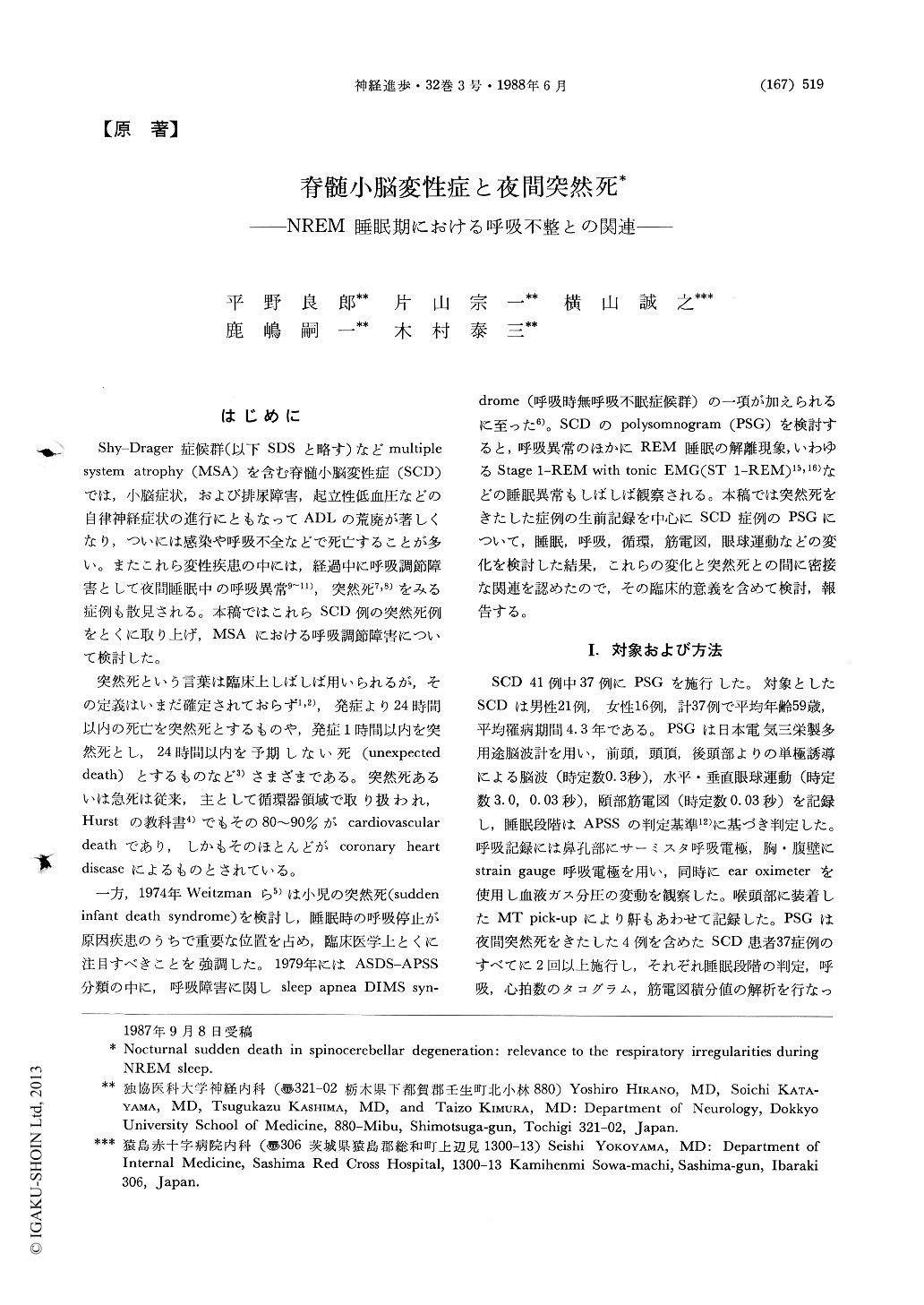Japanese
English
- 有料閲覧
- Abstract 文献概要
- 1ページ目 Look Inside
はじめに
Shy-Drager症候群(以下SDSと略す)などmultiplesystem atrophy(MSA)を含む脊髄小脳変性症(SCD)では,小脳症状,および排尿障害,起立性低血圧などの自律神経症状の進行にともなってADLの荒廃が著しくなり,ついには感染や呼吸不全などで死亡することが多い。またこれら変性疾患の中には,経過中に呼吸調節障害として夜間睡眠中の呼吸異常9〜11),突然死7,8)をみる症例も散見される。本稿ではこれらSCD例の突然死例をとくに取り上げ,MSAにおける呼吸調節障害について検討した。
突然死という言葉は臨床上しばしば用いられるが,その定義はいまだ確定されておらず1,2),発症より24時間以内の死亡を突然死とするものや,発症1時間以内を突然死とし,24時間以内を予期しない死(unexpecteddeath)とするものなど3)さまざまである。突然死あるいは急死は従来,主として循環器領域で取り扱われ,Hurstの教科書4)でもその80〜90%がcardiovasculardeathであり,しかもそのほとんどがcoronary heartdiseaseによるものとされている。
In spinocerebellar degeneration (SCD) the sudden unexpected respiratory arrest during the night sleep is frequently experienced. The review of 41 patients with SCD showed that six out of 9 death were nocturnal sudden death (NSD). To elucidate the cause of NSD, the study by using polysomnography (PSG) was carried out in 37 patients with SCD, of whom 3 patients (two with cerebello-olivary atrophy and one with Shy-Drager syndrome (SDS) ) died suddenly in the night and the one (olivopontocerebellar atrophy (OPCA)) died during PSG examination. The patient with OPCA, in whom catastrophy happened during the third PSG recording, disclosed that the sudden respiratory arrest preceded the cardiac arrest.

Copyright © 1988, Igaku-Shoin Ltd. All rights reserved.


